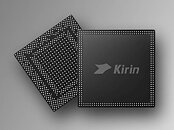- Joined
- Oct 9, 2007
- Messages
- 47,609 (7.45/day)
- Location
- Dublin, Ireland
| System Name | RBMK-1000 |
|---|---|
| Processor | AMD Ryzen 7 5700G |
| Motherboard | Gigabyte B550 AORUS Elite V2 |
| Cooling | DeepCool Gammax L240 V2 |
| Memory | 2x 16GB DDR4-3200 |
| Video Card(s) | Galax RTX 4070 Ti EX |
| Storage | Samsung 990 1TB |
| Display(s) | BenQ 1440p 60 Hz 27-inch |
| Case | Corsair Carbide 100R |
| Audio Device(s) | ASUS SupremeFX S1220A |
| Power Supply | Cooler Master MWE Gold 650W |
| Mouse | ASUS ROG Strix Impact |
| Keyboard | Gamdias Hermes E2 |
| Software | Windows 11 Pro |
Semiconductor Manufacturing International Corporation (SMIC), the state-backed Mainland Chinese semiconductor foundry, announced that it commenced mass-production of 14 nm FinFET SoCs for Huawei's HiSilicon subsidiary, a mere one month since Huawei shifting chip orders from TSMC to it. The company is manufacturing Kirin 710A is a revision of the original Kirin 710 SoC from 2018, built on SMIC's 14 nm node. The 4G-era SoC is capable of powering mid-range smartphones for Huawei's Honor brand, and uses an Arm big.LITTLE setup of Cortex A53 and Cortex A57 cores. This represents a major milestone not just for SMIC, but also Huawei, which has seen the company's isolation from cutting-edge overseas fabs such as TSMC. Much of Huawei's fate is riding on the success of SMIC's next-generation N+1 node, which purportedly offers a 57 percent energy-efficiency gain over 14 nm FinFET, rivaling sub-10 nm nodes such as 7 nm; enabling Huawei to build 5G-era SoCs.

View at TechPowerUp Main Site

View at TechPowerUp Main Site

